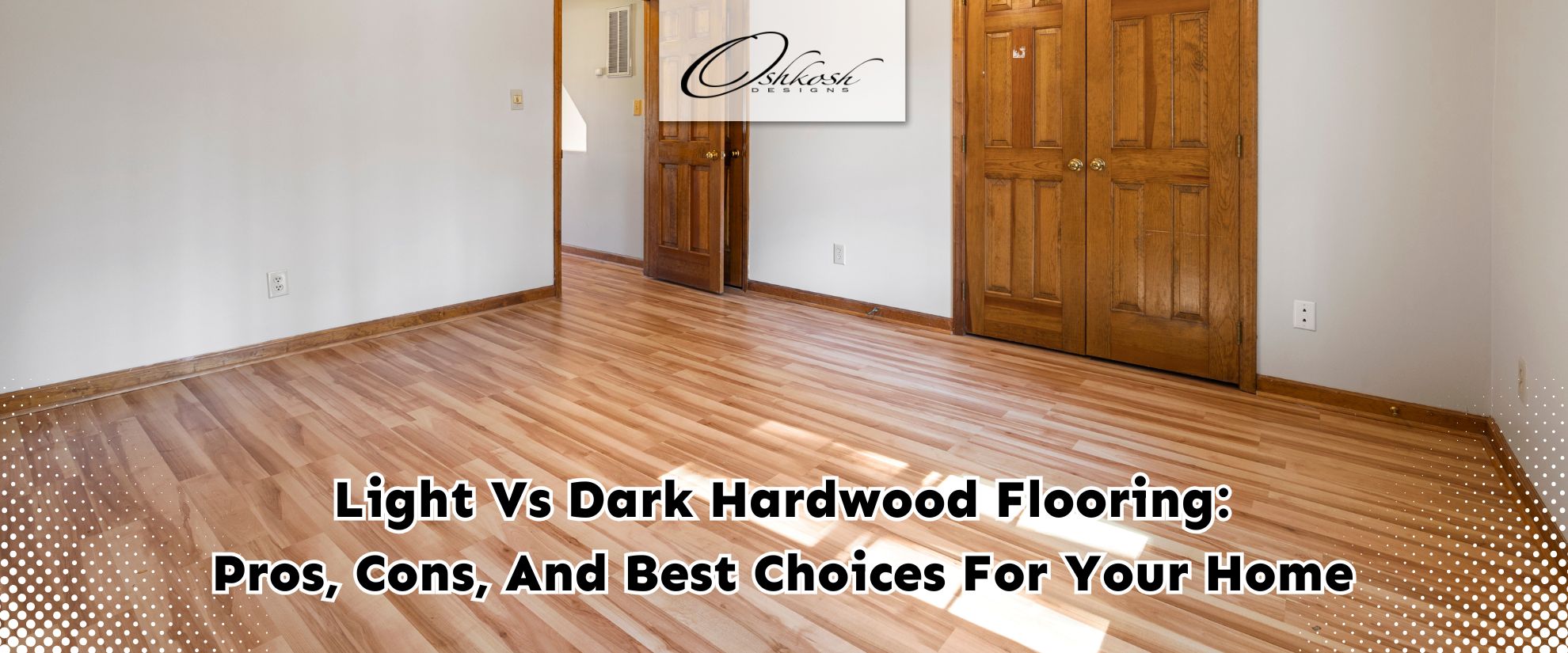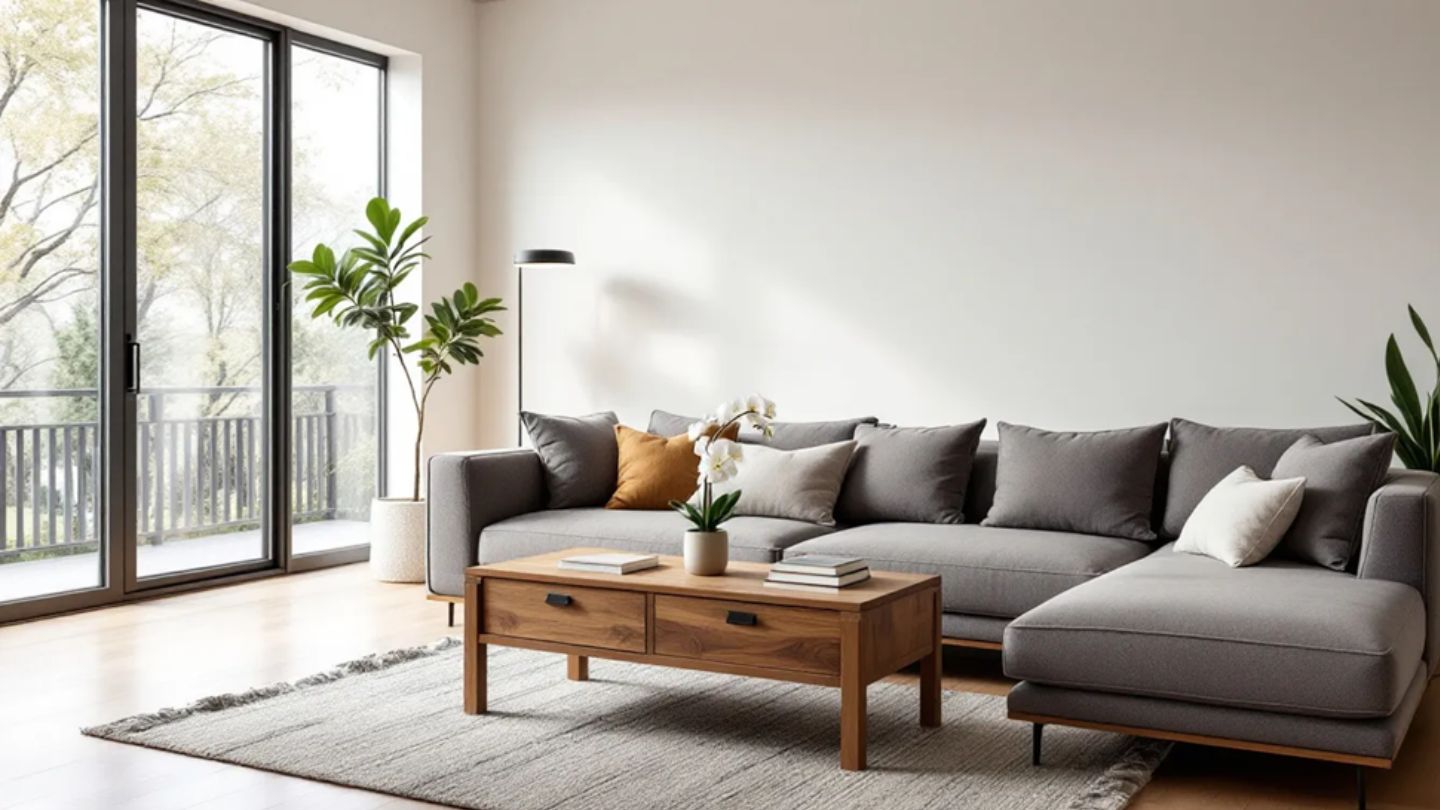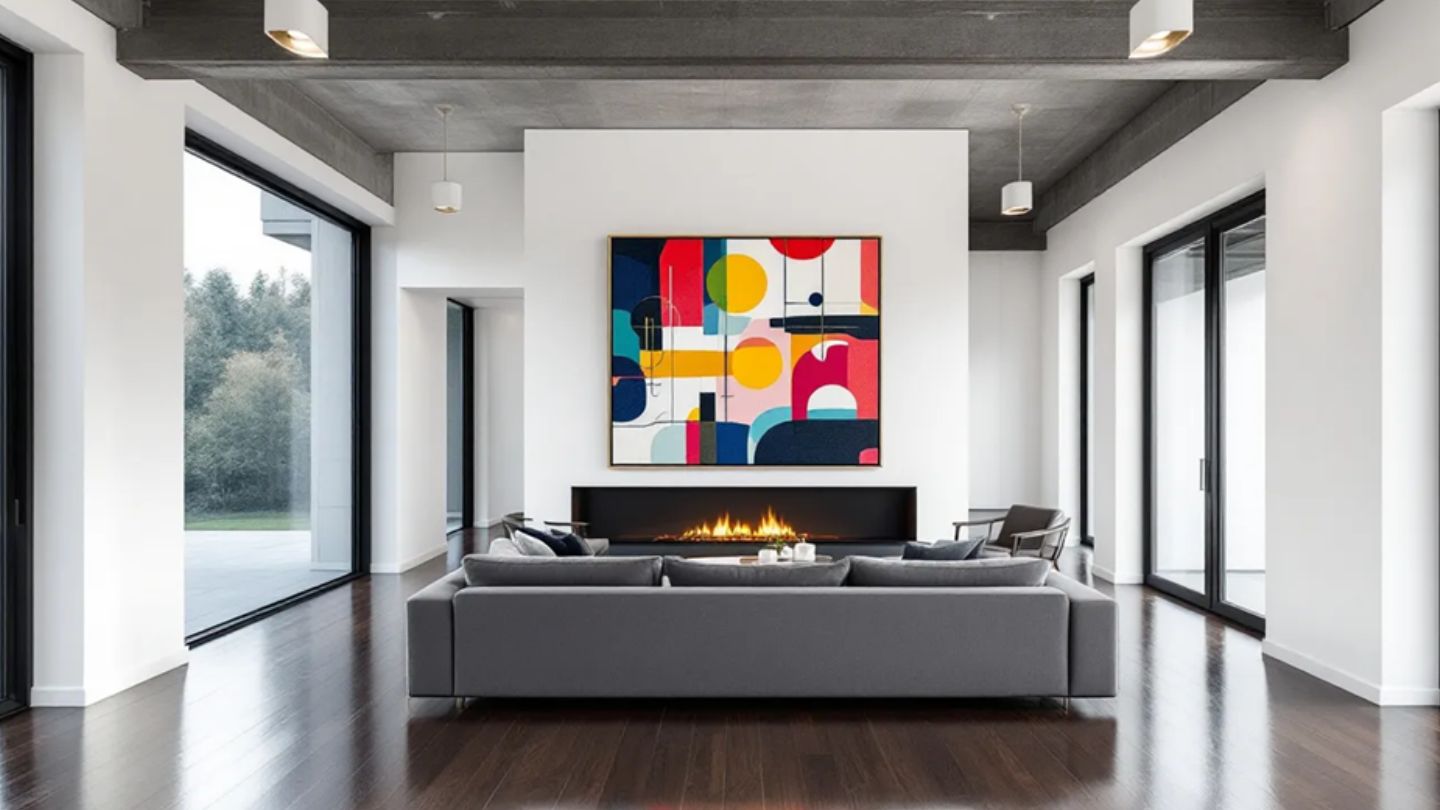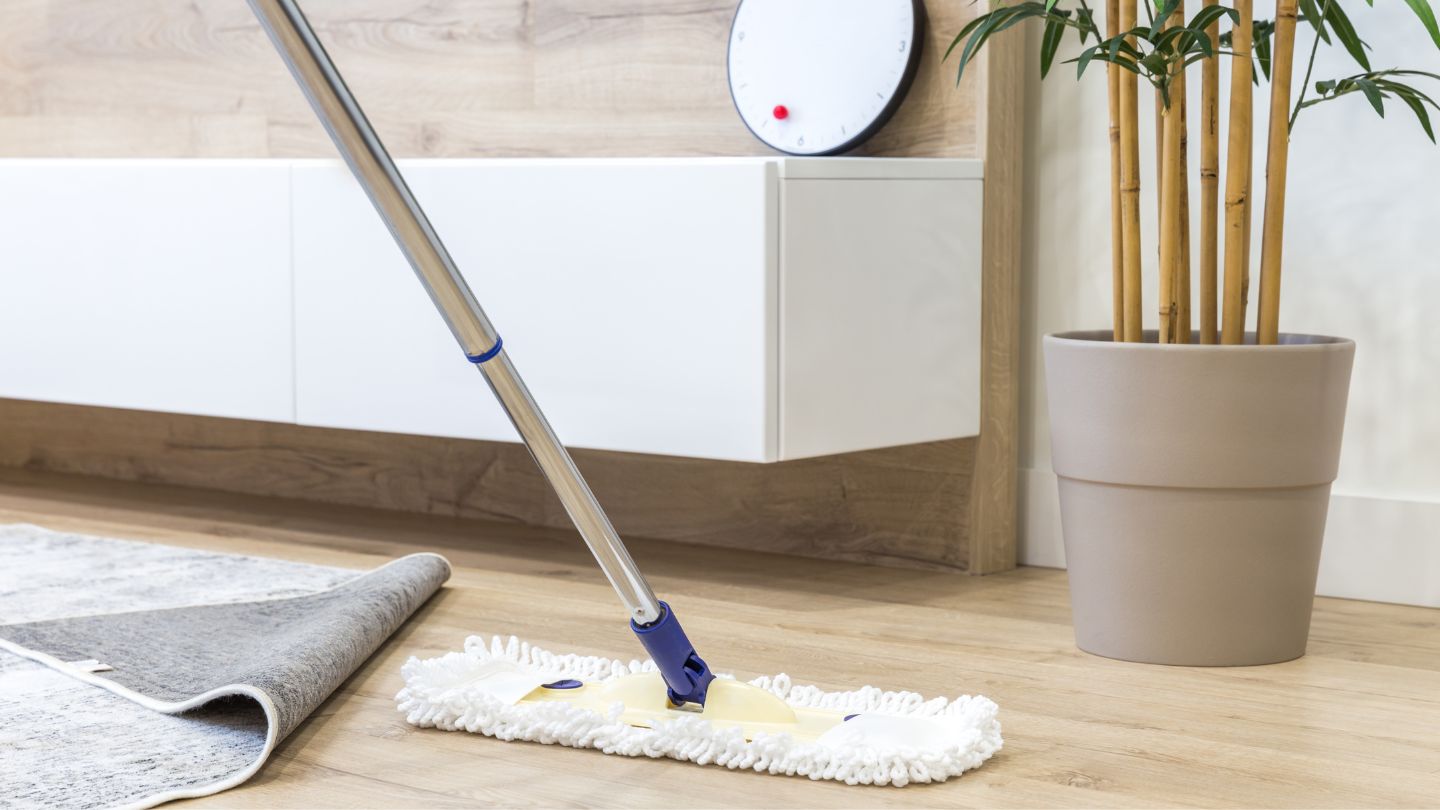Deciding between light vs dark hardwood flooring? We’ve got you covered. This guide will walk you through the key differences, benefits, and downsides of each option to help you make an informed decision.
Key Takeaways
- Light hardwood floors reflect natural light, making spaces feel brighter and larger, while dark floors create a cozy atmosphere but may make smaller rooms feel enclosed.
- Both flooring options have pros and cons; light floors can show dirt more easily but hide scratches, whereas dark floors are sophisticated but require more frequent maintenance.
- Choosing the right hardwood flooring should consider room size, natural light, and long-term value to enhance the overall aesthetic and functionality of your home.
The Impact of Natural Light on Hardwood Flooring
The presence of natural light can significantly influence how custom hardwood flooring presents within a space. Light hardwood reflects daylight more effectively, enhancing visual openness and drawing attention to fine floor details such as intricate inlays or parquet patterns. This makes it an ideal choice for rooms that benefit from added brightness, particularly when highlighting artisan-crafted design features.
On the other hand, dark hardwood absorbs light, introducing dramatic contrast and a refined, intimate atmosphere. These deeper tones can complement spaces where strong architectural elements or custom wood medallions are the focal point. Understanding how different lighting conditions—such as morning or evening sun—interact with flooring tones ensures optimal selection of wood species and design elements, especially when working with specialists who tailor solutions to your home’s unique lighting profile.
Benefits of Light Hardwood Floors
Incorporating light hardwood floors into your home comes with numerous benefits, including the illusion of a larger space. These floors are highly effective at reflecting natural light, which brightens up rooms and lends them a more spacious feel. This feature is particularly advantageous for smaller spaces or areas that don’t receive much natural light.
Light hardwood flooring is also an excellent choice for households with active children and pets. The smooth texture of the wood ensures that scuffs and everyday wear are less apparent, making it ideal for homes where high traffic is common. Pet hair and small debris tend to blend in better with lighter woods, easing the cleaning demands on homeowners.
The aesthetic flexibility offered by light hardwood floors makes them well-suited to various interior designs. Known as ‘blonde’ wood within design circles, these types of flooring foster welcoming atmospheres while offering compatibility with both contemporary minimalist decor styles and traditional setups alike, assuring they can be effortlessly incorporated into any decorating scheme you choose for your residence.
Drawbacks of Light Hardwood Floors
While light hardwood flooring offers visual benefits, it’s important to evaluate its performance from a functional and design-integrated perspective. These lighter shades may reveal surface messes such as pet fur or footprints more easily, especially in high-traffic zones. However, when floors are professionally sealed and finished, these concerns are minimized through advanced techniques designed to enhance durability and conceal routine wear.
Light-toned hardwood may also lack the pronounced visual weight found in darker wood, which could limit dramatic contrast in interior styling. However, when paired with detailed floor inlays or handcrafted borders, this subtlety becomes an advantage, serving as a complementary backdrop that allows artisan details to shine. Expert flooring consultants can help clients choose the optimal finish and wood species to preserve both aesthetic balance and maintenance ease over time.
Advantages of Dark Hardwood Floors
Dark wood flooring introduces an unmatched sense of richness and distinction to interiors. These deeper tones serve as a bold foundation that enhances the visual impact of customized design elements such as wood medallions or parquet panels. When designed by professionals, dark floors can be crafted to balance shadow and light across the space, adding structure and cohesion to modern and traditional aesthetics alike.
From a performance standpoint, professionally finished dark hardwood surfaces can be treated to effectively minimize the visibility of surface blemishes. This is especially advantageous in custom installations, where the focus is on longevity and refined presentation. Floor design specialists can guide homeowners in selecting finishes that strike the right balance between visual elegance and everyday durability, ensuring a timeless appearance that supports both form and function.
Disadvantages of Dark Hardwood Floors
Despite their sophisticated appearance, dark hardwood floors can present practical challenges if not professionally evaluated and installed. Their ability to highlight dust, debris, or light-colored pet hair makes it essential to employ proper finishing methods and protective treatments from the outset. Expert floor designers can recommend specific finishes that reduce visual buildup while maintaining rich color integrity.
Additionally, dark hardwood surfaces with high-gloss finishes are more likely to emphasize scratches or imperfections. Rather than relying on generic cleaning routines, professional maintenance protocols tailored to the flooring’s wood species and finish are recommended. These include precision cleaning products and protective techniques that support the floor’s long-term appearance. In spaces with limited natural light, designers may recommend using dark tones as accent borders or focal inlay elements to avoid a visually confined atmosphere while still achieving a grounded aesthetic.
Choosing the Right Floor Based on Room Size
The relationship between floor tone and room size plays a crucial role in determining the right hardwood flooring solution. Light-toned floors can open up smaller rooms, enhancing natural brightness while subtly supporting focal design features like inlaid borders or medallions. Flooring professionals often use light wood finishes strategically to emphasize handcrafted detailing, especially in compact or enclosed areas.
In contrast, darker hardwoods offer visual depth that complements large, open layouts. These tones can anchor expansive spaces while drawing attention to intricate, custom design elements integrated into the floor. Professional designers assess the room’s scale, layout, and usage to determine how specific wood tones will perform visually and functionally, ensuring the chosen flooring maximizes design impact without compromising the balance of space. To aid in these assessments, the Janka hardness scale is often used to evaluate the durability and resistance of different wood species.
High Traffic Areas and Maintenance
In high-traffic areas, the flooring must meet both aesthetic and durability standards. Light hardwoods are often favored in these spaces due to their ability to minimize the appearance of scratches and daily wear. Professional finishing processes, such as wire-brushing or matte sealing, further enhance this resilience, making them a smart choice for areas that see heavy footfall.
Dark hardwood, while elegant, typically requires more attention to maintain its pristine appearance. However, with the support of expert installation teams, clients can incorporate custom treatments that reduce dust visibility and extend surface integrity. Floor protection measures—such as strategic rug placement or under-furniture pads—are also part of a broader maintenance approach professionally recommended to preserve handcrafted floor designs. These tactics ensure longevity and help showcase detailed work in high-use environments.
Enhancing Your Home’s Aesthetic
Hardwood flooring plays a foundational role in elevating interior design. Custom-crafted wood elements, such as patterned inlays or parquet layouts, allow the floor itself to become a statement piece. Lighter hardwood tones support minimalistic and open concepts, while creating a bright, inviting canvas ideal for showcasing personalized design accents.
Dark flooring, by contrast, contributes a moody richness and layered depth that pairs seamlessly with ornamental floor elements. The interplay between dark bases and contrasting inlays or borders brings dynamic energy to formal living spaces and foyers. Working with flooring artisans ensures that selections not only match the room’s color palette but also harmonize with the handcrafted artistic features that define luxury flooring design.
Long-Term Value and Property Appeal
Custom hardwood floors are a premium investment that significantly boosts a home’s market appeal and long-term value. When created with expert craftsmanship, features like floor medallions, herringbone patterns, and detailed borders increase perceived quality and create strong buyer appeal. Whether opting for light or dark wood tones, the key to sustained value lies in the expert integration of aesthetic vision and functional excellence.
Flooring consultants work closely with clients to select woods and patterns that maintain market relevance and timeless appeal. Dark tones, currently in high demand, provide dramatic impact, while light tones lend universal versatility. Professionals also ensure consistent floor flow between rooms, creating visual unity that enhances architectural sophistication. Through expert guidance, homeowners can make informed decisions that elevate resale potential without compromising personal design goals.
Proper Care for Hardwood Floors
Maintaining the elegance and lifespan of your hardwood floors is essential, and this necessitates diligent care. Opt for a satin or flat finish on dark hardwood floors to achieve an elegant look that doesn’t draw attention to any blemishes. To keep dirt at bay while safeguarding the wood’s integrity, regular cleaning with a suitable mop proves effective.
Selecting appropriate cleaning agents plays a critical role in protecting your floor’s surface. Use products specifically designed for hardwood floors to refresh the sheen and prevent any damaging chemical interactions.
Regular upkeep underscores the lasting nature of quality parquet flooring – when properly cared for, these robust floors can endure numerous years of use.
Summary
When deciding between light and dark hardwood floors, it’s essential to consider their unique benefits tailored to various spatial, lighting, and aesthetic conditions. Light flooring can visually expand compact rooms and minimize wear in high-traffic areas, while dark tones introduce luxury, grounding, and striking contrast. Your final choice should be informed by room size, daily use, lighting conditions, and how well each tone complements the space’s custom design.
At Oshkosh Designs, we specialize in premium, handcrafted hardwood floor designs—from parquet to medallions to intricate inlays. Our expert team is dedicated to guiding you through each design decision, ensuring your home receives a flooring solution that delivers lasting elegance, functionality, and value. Contact us today to transform your space with timeless hardwood flooring.
Frequently Asked Questions
Can custom inlays work with both light and dark hardwood floors?
Yes, inlays complement both tones—light floors highlight contrast, while dark floors enhance depth and elegance.
Do certain wood species pair better with light or dark stains?
Absolutely. Maple and ash suit light stains, while walnut and mahogany enrich darker tones naturally.
Will room lighting change how my hardwood floor color looks?
Definitely, natural and artificial light can alter the appearance of wood tones throughout the day.




